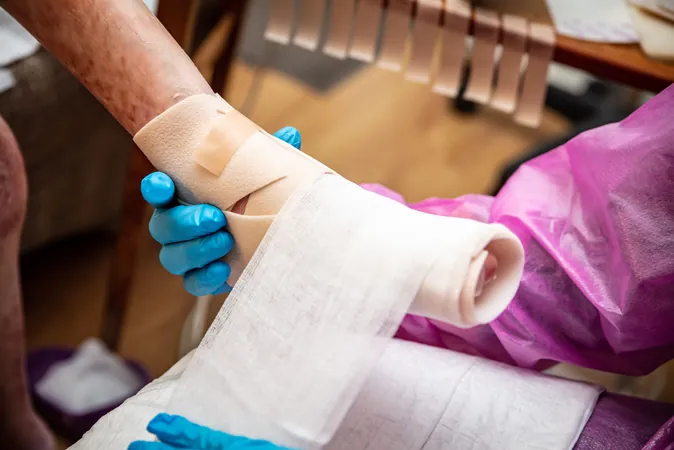
Breakthrough in RDEB Treatment: Nanoneedles Propel CRISPR Base Editing to a Stunning 96.5% Success Rate!
2025-03-25
Author: John Tan
Understanding RDEB and Its Challenges
Recessive dystrophic epidermolysis bullosa is a debilitating genetic condition primarily caused by mutations in the COL7A1 gene. These mutations lead to a deficiency in type VII collagen, key to the integrity of skin anchoring fibrils. The absence of this collagen results in extreme skin fragility, causing painful blistering and severe scarring. Current treatment options focus mainly on alleviating symptoms, underlining the urgent need for effective gene therapies.
Innovative Approach with CRISPR-Cas9
In this groundbreaking study, researchers employed a CRISPR-Cas9 gene-editing system strategically aimed at a common mutation within the COL7A1 gene. Using patient-derived stem cells, the team utilized CRISPR-Cas9 ribonucleoprotein complexes to precisely edit the faulty genes. The evaluation of the gene-editing success was rigorous, focusing on gene correction rates, C7 protein restoration, and enhancements in extracellular matrix strength.
Impressive Results: Specificity and Safety Assured
The results were overwhelmingly positive. Gene correction was observed in approximately 65% of the modified fibroblast cells, and immunofluorescence studies showed restored C7 expression at the crucial dermal-epidermal junction in 78% of keratinocyte cultures. Furthermore, improvements in cell adhesion and resistance to mechanical stress were noted, indicating functional restoration of anchoring fibrils. Notably, the risk of unintended mutations (off-target effects) was minimal, highlighting the high specificity of this CRISPR approach.
The study innovatively integrated nanoneedles as a delivery method, which allowed for an unprecedented 100% correction of the pathogenic variant. These nanoneedles, excellently compatible with fibroblasts, exhibited no significant toxicity or adverse immune reactions, a stark contrast to traditional gene delivery methods. Their application illustrated a more effective and safer alternative to past transfection techniques.
Looking Ahead: Future Perspectives on Gene Therapy
While this study showcases the transformative potential of CRISPR-Cas9 in the fight against RDEB, researchers acknowledge that challenges such as efficient delivery and long-term safety remain crucial hurdles. Future research will aim to optimize these delivery systems, exploring additional avenues like viral vectors and nanoparticle-based strategies to enhance in vivo applications.
According to the authors of the study, Mustfa et al., "Leveraging advances in semiconductor manufacturing, nanoneedles can be produced at scale for competitive costs, providing an exciting opportunity for minimally invasive gene editing in primary cells." Such innovations underscore the significance of these nanoneedles in the broader context of genetic disease therapies.
As research continues, the implications of these findings could extend beyond RDEB, heralding a new era in the treatment of various genetic disorders, and bringing newfound hope to countless patients worldwide. Stay tuned for more exciting developments in gene editing and regenerative medicine!



 Brasil (PT)
Brasil (PT)
 Canada (EN)
Canada (EN)
 Chile (ES)
Chile (ES)
 Česko (CS)
Česko (CS)
 대한민국 (KO)
대한민국 (KO)
 España (ES)
España (ES)
 France (FR)
France (FR)
 Hong Kong (EN)
Hong Kong (EN)
 Italia (IT)
Italia (IT)
 日本 (JA)
日本 (JA)
 Magyarország (HU)
Magyarország (HU)
 Norge (NO)
Norge (NO)
 Polska (PL)
Polska (PL)
 Schweiz (DE)
Schweiz (DE)
 Singapore (EN)
Singapore (EN)
 Sverige (SV)
Sverige (SV)
 Suomi (FI)
Suomi (FI)
 Türkiye (TR)
Türkiye (TR)
 الإمارات العربية المتحدة (AR)
الإمارات العربية المتحدة (AR)